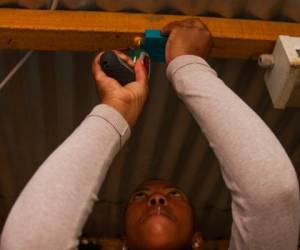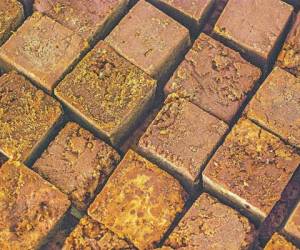A green latrine? That is exactly what public health engineer Mizanur Rahman, 59, has invented. It’s a renewable, environmentally friendly latrine that could effectively tackle the problem of sanitation management in Bangladesh.
Mizanur’s invention is quite simple. Yet it has the potential to virtually revolutionize public health and sanitation management in the country.
The renewable latrine has not been named as yet. Meanwhile, Mizan calls it a ‘two-tank latrine.’
This unique latrine has two septic tanks. It will ensure a green environment as the waste does not need to be disposed of in the open.
The technology is not rocket science. It consists of two septic tanks for the disposal of human faeces. A sluice valve is fitted in a pipe between the two tanks. When one of the the septic tanks is eventually filled with faeces in about two years, the sluice valve will close the tank and open the other for fresh faeces to be channelled. In the meantime, the waste in the first tank will gradually dry and be transformed into organic fertilizer.
In this way the latrine can be used forever by switching the tanks every couple of years with the use of the valve.
Mizanur Rahman exhibited a model of his invention at an agriculture invention fair in Netrokona’s Purbadhara upazila in the year he invented it.
According to the public health engineering department, sanitation coverage in Bangladesh is 97 per cent. It is indeed a revolution, but Mizanur believes that is only half the revolution. Currently, human excretion has to be cleared from a traditional sanitary latrine after a certain time. This waste is usually dumped in ponds, reservoirs or rivers, resulting in environmental pollution. However, the latrine he invented, will transform the waste into organic fertilizer.
The model was finalised but it was not smooth going for Mizan. Initially, he went to Purbadhala's UNO Helaluddin for funds. He convinced Helaluddin about the sustainability of this latrine. The department gave start-up funds for a pilot project, but then he was transferred to Mymensingh district. Fortunately, the department then sent the funds allocated for the pilot project to Mymensingh.
Funds were not a problem, but the sluice valve required for the latrine was not available anywhere. It wasn’t even available in neighbouring India.
The department castigated him and started pressuring him to speed things up. Mizan was not one to give up so easily. He came to Dhaka and with the help of a workshop, he made the sluice valve himself.
The model of this renewable latrine was made in 2013. The test run was conducted in 2014. Mizanur Rahman conducted the test run in Trishal and Phulpur upazila.
Thirty-five latrines have been set up in Trishal in mid-2015 and six have been set up in Kismat Dewla area of Phulpur as of April, 2014. One latrine was set up in the Phulbaria upazila parishad office.
The inventor himself successfully used organic fertilizer he collected from the renewable latrine of his house. This technology costs 20 per cent more than the regular ones. However, it actually saves money in the long run as there is no need to dig new septic tanks.
Mizanur Rahman has exhibited his invention in different innovation fairs over the last two years. He bagged the best invention prize in 2014 at the Digital Invention Fair organised by Mymensingh district administration.
This renewable latrine is getting popular in the areas where it has been set up. One user is encouraging another in their locality to use this technology.
Mizanur Rahman's invention is well on the way to success. He is confident that this unique renewable latrine will be a milestone in the country’s sanitation management.






















